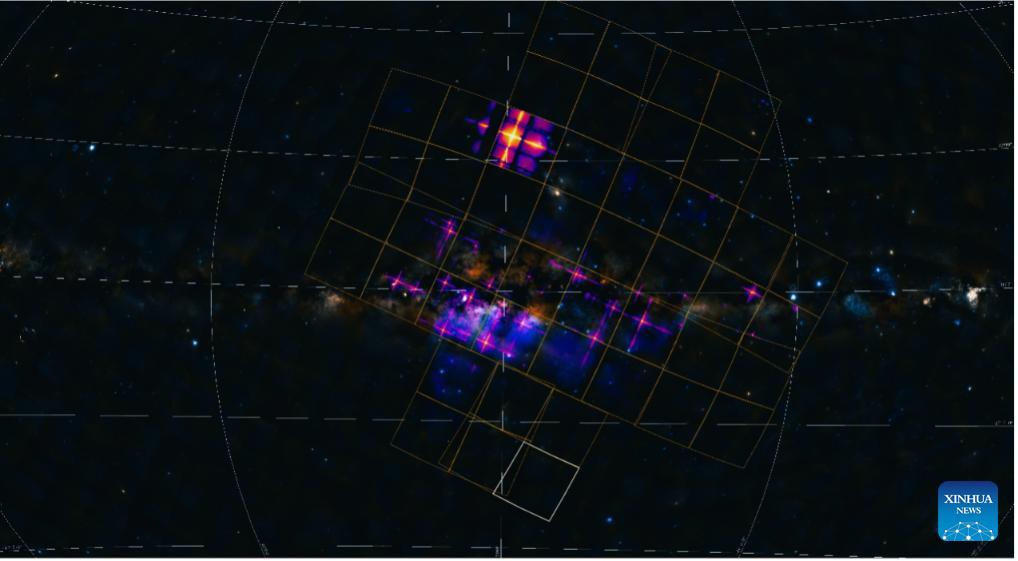China's Einstein Probe astronomical satellite captures its first in

This photo shows a view captured by a Wide-field X-ray Telescope (WXT) directed at the center of the Milky Way for around 40,000 seconds. [The National Space Science Center of the Chinese Academy of Sciences/Handout via Xinhua]
China's Einstein Probe (EP) astronomical satellite, sent into space in January this year, has captured its first in-orbit detection images, which were presented at a parallel forum of the 2024 Zhongguancun Forum in Beijing on Saturday.
Inspired by the functions of lobster eyes, EP uses new X-ray detection technology to observe mysterious transient phenomena in the universe that flicker like fireworks.
Yuan Weimin, principal investigator of the EP mission and a researcher at the National Astronomical Observatories of the Chinese Academy of Sciences (CAS), said that since the probe's launch on Jan. 9 this year, commissioning tests have been conducted, confirming the functionality and performance of the EP satellite and its scientific instruments.
During its commissioning phase, EP has detected 17 X-ray transients and 127 stellar flares. These findings have guided a range of ground-based and space-based telescopes in follow-up observations in multiple wavebands, Yuan said.
Preliminary analysis of the data from EP and other telescopes has confirmed EP's potential to discover diverse X-ray sources and even new types of objects, and its important role in unveiling the evolution of the universe and the structure of spacetime, Yuan added.
"With great efforts, our team made this almost impossible mission possible," Yuan said.
Zhang Chen, assistant to EP's principal investigator, said that the probe has captured X-ray images of various celestial bodies during its commissioning phase. These observations have demonstrated the outstanding capabilities of EP's two scientific instruments: a Wide-field X-ray Telescope (WXT) to monitor a panorama of the X-ray sky, and a Follow-up X-ray Telescope (FXT) to provide close-up views and pinpoint transient sources captured by the WXT.
EP will continue its in-orbit calibration activities in the coming months, Zhang added.
The EP mission is one of a series of space science missions led by CAS. It is also an international collaboration mission with contributions from the European Space Agency (ESA), the Max Planck Institute for Extraterrestrial Physics (MPE) in Germany, and the French space agency CNES.
The mission aims to help scientists capture the first light of supernova explosions, search for and pinpoint X-ray signals accompanying gravitational wave events, and discover dormant black holes and other faint transient and variable celestial objects in the far reaches of the universe.